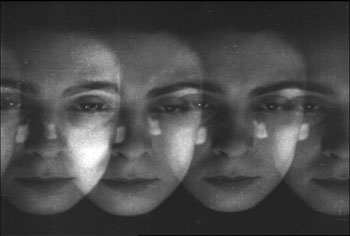Wild AND Weird: The Alloy Orchestra Plays 10 Fascinating and Innovative Films 1906-1926

By Roger Ebert
RELEASE DATE: 2011

The first time I saw the Alloy Orchestra perform with a silent film was at the Telluride Film Festival, a place where I've been introduced to so many of the pleasures of the movies. I was able to invite them to Ebertfest in the early 2000s, and they've been back every year since, except for one year when the Champaign-Urbana Symphony Orchestra played. As everybody knows, "silent" films were invariably accompanied by music, although few of them must have enjoyed the resources of the Alloy. (Sneak down to the orchestra pit, say hello to Terry Donahue, Ken Winokur and Roger Miller, and get a glimpse of some of their more unusual instruments, including a chamber pot).
Wild and Weird, the Alloy's special program this year, consists of short silent films hand-picked by the Alloy's members. Most of their bookings are with features, and by compiling this selection they're able to suggest additional riches from the early years. Then, as now, some of the most experimental work is done in short subjects.

This program is especially timely right now in the aftermath of the success of Martin Scorsese's Hugo, which centered on the rediscovery of the French film pioneer Georges Méliès and his work. Only Scorsese would have been bold enough to attempt such a project. Although his famous A Trip to the Moon is on the Alloy's Wild and Weird DVD, it won't be included in the program at Ebertfest, in order to free time for their eclectic selection of shorts that have possibly never been seen before by our audience.
Many of them show how the earliest filmmakers were intoxicated by the magic of special effects. Méliès himself began as a magician who uses film to perform "tricks" at a time when few audiences would have been sophisticated about the techniques he was using. Stop motion, superimposition, dissolves, optical shots - the first filmmakers delighted in digging into the new medium up to their elbows.
I will leave it to you to discover the pleasures of the Alloy's treasures, but cannot resist pointing out that Those Awful Hats (1909) is not only the shortest film directed by D. W. Griffith but also, I would argue, the most dramatic and arguably the first cinematic use of the deus ex machina.





